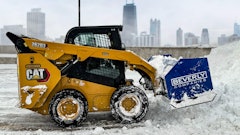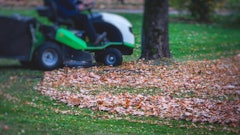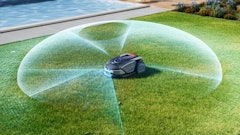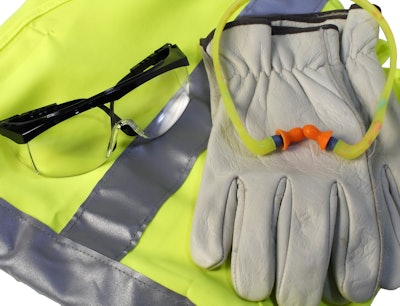
Landscaping is demanding work. From trimming hedges and digging ditches to hauling mulch and operating heavy equipment, landscapers drag their bodies through the dirt to get the job done. Add exposure to extreme heat, unpredictable weather, dust, chemicals, and loud machinery, and it’s clear that personal protective equipment (PPE) is essential for protecting against the hazards of the job.
Now imagine doing a full day's work with ill-fitting PPE — a baggy safety vest that catches on every branch, oversized work gloves that rob fingers of dexterity, boots that slip and cause painful blisters, goggles that constantly fog or fall off, and ear protection that won’t stay in place.
For decades, this has been the daily reality for many women in landscaping — but not anymore.
In January 2025, the Occupational Safety and Health Administration (OSHA) finalized an update to its PPE standard. The new rule explicitly mandates that PPE must fit properly, reinforcing OSHA’s position that improperly fitting gear does not provide adequate protection for landscapers, arborists, and groundskeepers — especially women.
What Does the Rule Say?
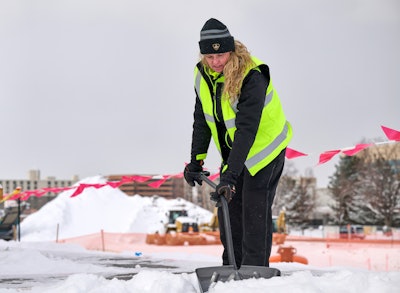 Female groundskeepers need high-visibility PPE that fits properly, so they can stay focused on the work.RefrigiWear
Female groundskeepers need high-visibility PPE that fits properly, so they can stay focused on the work.RefrigiWear
For landscaping professionals, this updated standard applies to gear such as safety toe shoes and work boots, cut-resistant and chemical-resistant gloves, protective eyewear, and sun-protective clothing. For landscaping companies that operate snow removal equipment in the winter, the rule also covers cold-protective insulated clothing and related PPE.
How Does the Rule Impact Women in Landscaping?
According to the U.S. Bureau of Labor Statistics, women make up about 10 percent of the landscaping workforce. However, most high-visibility workwear and PPE for landscape workers are designed for men.
More than 4 out of 5 women regularly have trouble finding PPE that fits correctly. For example, female landscapers are often given oversized gloves that reduce dexterity and increase the risk of getting caught in tools or machinery. Ill-fitting men’s boots can lead to slips, trips, and falls, or cause foot fatigue that increases the risk of injury. Safety vests that are too large frequently snag on branches, fences, or equipment, creating additional hazards.
The cumulative effect of this ill-fitting gear is more than just a matter of discomfort — it can significantly increase safety risks and make physically demanding jobs even more difficult for women.
OSHA’s final rule recognizes these challenges and addresses the real-world consequences of poorly fitting PPE. Under the updated regulations, employers are now required to provide properly fitting PPE for women and for all workers who need non-standard or extended sizes.
What Does the Rule Mean for Employers?
Although OSHA’s final rule is expected to take about a year to be fully incorporated into law, landscaping businesses should begin aligning their PPE policies and buying practices now to avoid future citations.
Evaluate Current PPE Needs
Compliance begins with assessing which employees need PPE and identifying potential job hazards — such as sun exposure, sharp tools, or heavy machinery.
Employers must also understand sizing needs. Find crew members wearing ill-fitting PPE, gather size information, or take arm, inseam, chest, and waist measurements to find gear that fits properly.
Find the Right Fit
OSHA defines properly fitting PPE as “the appropriate size to provide an employee with the necessary protection from hazards and does not create additional safety and health hazards arising from being either too small or too large.”
Resources such as the International Safety Equipment Association (ISEA) Buyers Guide help landscapers search for gear designed for diverse body types. The guide links to ISEA member manufacturers that offer women-specific PPE and extended sizing (short/tall, 3XL to 5XL).
Employers are still responsible for matching PPE size specs with employee needs. Look for labeling that distinguishes men’s, women’s, or unisex gear, and use size charts correctly.
No more “Pink It & Shrink it”
 Female workers are more productive when they have PPE that fits properly.RefrigiWear
Female workers are more productive when they have PPE that fits properly.RefrigiWear
In fact, when issuing its final rule on properly fitting PPE, OSHA asserted that “comfort is an important consideration for properly fitting PPE, both because more comfortable PPE is more likely to be worn by workers rather than discarded and unused and because discomfort in many cases can indicate improper fit.”
Comfort-enhancing features, such as adjustable fall harnesses with padded straps for female arborists, safety vests with drawstring waists, and high-visibility clothing with stretch panels that offer protection without hindering the movement of female landscapers, can improve safety compliance and increase productivity.
Update PPE Policies
Employers should revise their PPE policies to align with OSHA’s updated rule. This includes clearly identifying which crew members require PPE, when it must be worn, and ensuring that it fits properly. Updated policies should be clearly communicated to all employees and should include instructions on how workers can request gear in the correct size.
Level the Field
Just as conditioning soil promotes strong roots, providing properly fitting PPE lays the foundation for safety, comfort, and productivity — especially for women in landscaping. By assessing current PPE needs, updating safety practices to meet OSHA’s revised rule, and supplying gear that fits well and feels comfortable, landscaping business owners can foster a safer, more inclusive, and more efficient workforce.



![Gravely Pro Turn Mach One My23 Dsc03139 Edit 1200x800 5b2df79[1]](https://img.greenindustrypros.com/mindful/acbm/workspaces/default/uploads/2025/10/gravely-pro-turn-mach-one-my23-dsc03139-edit-1200x800-5b2df791.BucBnDoN22.jpg?auto=format%2Ccompress&fit=crop&h=100&q=70&w=100)
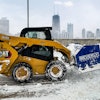
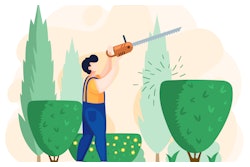
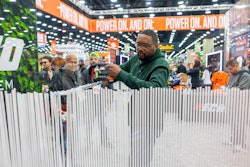
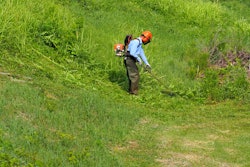



![Gravely Pro Turn Mach One My23 Dsc03139 Edit 1200x800 5b2df79[1]](https://img.greenindustrypros.com/mindful/acbm/workspaces/default/uploads/2025/10/gravely-pro-turn-mach-one-my23-dsc03139-edit-1200x800-5b2df791.BucBnDoN22.jpg?ar=16%3A9&auto=format%2Ccompress&fit=crop&h=135&q=70&w=240)
